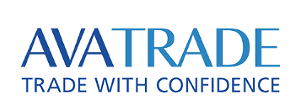Using advanced algorithms and machine learning, AI trading systems can make split-second decisions and uncover opportunities that human traders might miss.
In this article, we’ll examine the concept of AI trading and show you how to develop your AI trading strategy. Whether you’re a seasoned trader or a newcomer, this article will provide the insights you need to leverage AI’s potential in finance. Let’s dive in!
The Steps To Develop Your Own AI Trading Strategy
Developing your own AI trading strategy is a complex and iterative process. Here are the steps to develop your own AI trading strategy:
Data Gathering and Preparation
- Data Collection: Acquire historical market data, including price and volume information for the assets you want to trade. Additionally, gather relevant financial indicators (e.g., moving averages) and external data sources (e.g., news sentiment or economic indicators).
- Data Preprocessing: Cleanse the data by removing outliers, filling in missing values, and addressing inconsistencies. Ensure the data is in a consistent format and properly timestamped for analysis.
- Feature Engineering: Create informative features from the raw data. These features can include technical indicators (e.g., RSI or MACD) and derived metrics that capture market dynamics.

Model Selection and Training
- Algorithm Selection: Choose a suitable machine learning algorithm based on your trading objectives. For instance, deep learning models like neural networks may be used for complex pattern recognition, while decision trees can provide transparency in decision-making.
- Training and Optimization: Train your AI model using historical data. Optimize the model by fine-tuning hyperparameters and conducting cross-validation to ensure it generalizes well to unseen data.
Backtesting and Simulation
- Backtesting Framework: Develop a backtesting system to assess your strategy’s performance using historical data. This involves simulating how the strategy would have performed in the past.
- Simulation Testing: Implement a paper trading or simulated trading environment to test your AI strategy in real time without risking actual capital. This step helps validate the strategy’s effectiveness and identify potential flaws.
Risk Management and Position Sizing
- Risk Management Rules: Define risk management rules, including stop-loss and take-profit levels. These rules are critical for protecting your capital and managing potential losses.
- Position Sizing: Determine how much capital to allocate to each trade based on your risk tolerance and strategy’s risk-reward ratio. Position sizing helps control the impact of individual trades on your portfolio.
Real-world Deployment and Monitoring
- Deployment: Once satisfied with the backtesting and simulation results, deploy your AI trading strategy with a small amount of real capital. Start small to minimize risk.
- Real-time Monitoring: Continuously monitor your strategy’s performance in live market conditions just the way bots like Ethereum Code do. Watch for deviations from the expected behavior and be prepared to adjust as needed.
Iterate and Improve
- Regular Review: Review your AI trading strategy to adapt to changing market conditions. Markets evolve, and what worked previously may require adjustments to remain effective.
- Refinement: Keep refining your AI model, risk management rules, and trade execution processes based on the insights gained from real-world trading. Continuous improvement is essential for long-term success in AI trading.
To Sum Up
Developing your AI trading strategy is an exciting journey into finance and technology. While it requires careful planning, data analysis, and continuous monitoring, the potential benefits are significant. By harnessing the power of AI, you can enhance your trading capabilities, adapt to changing market conditions, and make more informed decisions. Whether you’re a seasoned trader or a newcomer, the fusion of AI and trading offers a promising path toward achieving your financial goals in today’s dynamic markets.
- Broker
- Min Deposit
- Score
- Visit Broker
- Award-winning Cryptocurrency trading platform
- $100 minimum deposit,
- FCA & Cysec regulated
- 20% welcome bonus of upto $10,000
- Minimum deposit $100
- Verify your account before the bonus is credited
- Fund Moneta Markets account with a minimum of $250
- Opt in using the form to claim your 50% deposit bonus
Learn to Trade
Never Miss A Trade Again

Signal Notification
Real-time signal notifications whenever a signal is opened, closes or Updated

Get Alerts
Immediate alerts to your email and mobile phone.

Entry Price Levels
Entry price level for every signal Just choose one of our Top Brokers in the list above to get all this free.



